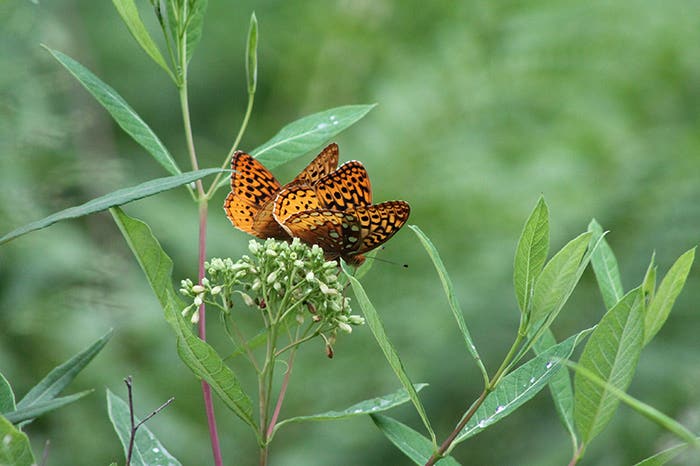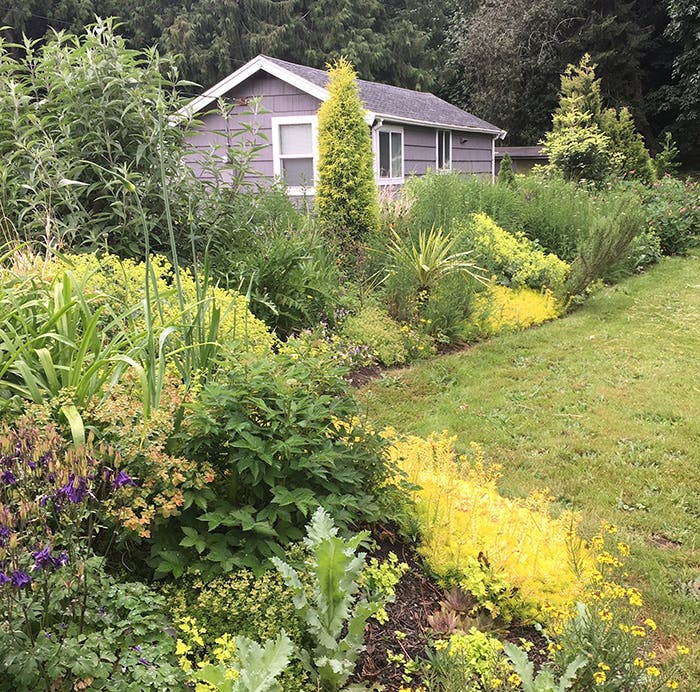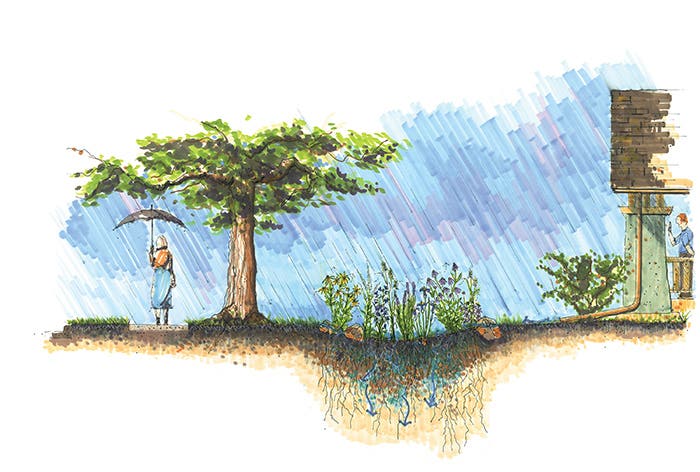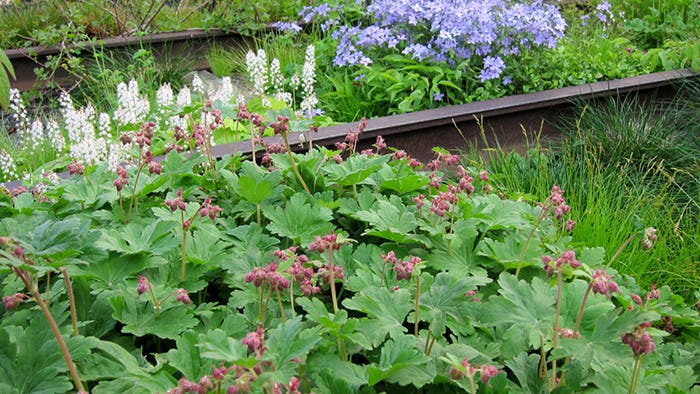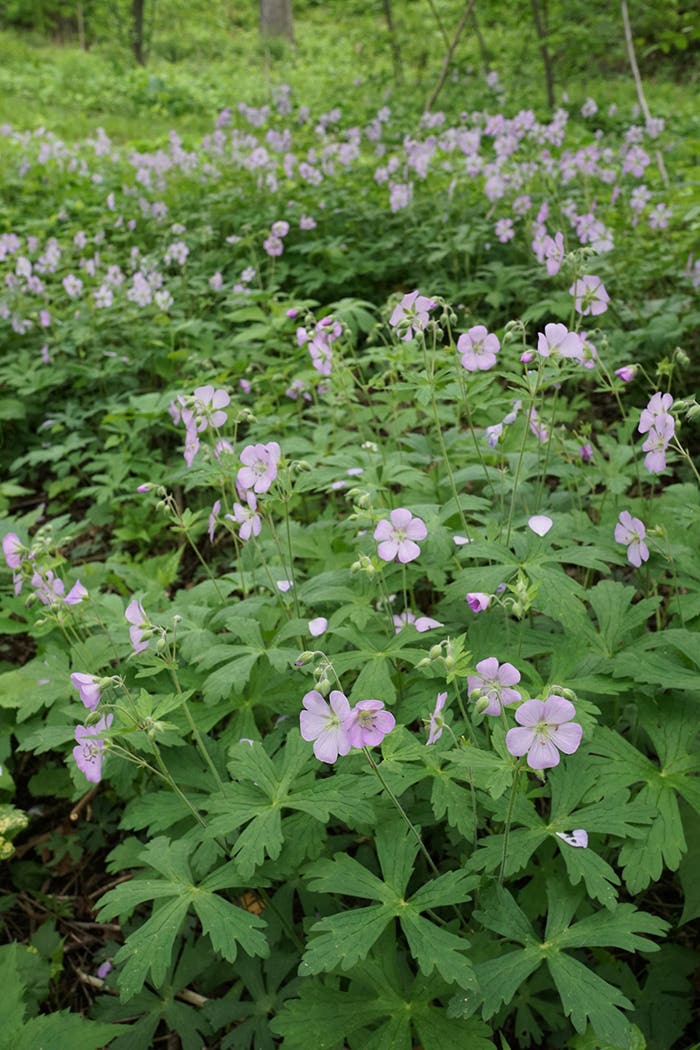Conspiracy Theory
A beautiful garden is a collaborative effort between its maker and its plants, neither more important than the other. The gardener envisions the garden, but the plants realize it. And in so doing they frequently create effects the gardener never anticipated…
A beautiful garden is a collaborative effort between its maker and its plants, neither more important than the other. The gardener envisions the garden, but the plants realize it. And in so doing they frequently create effects the gardener never anticipated.
For example, when I gardened in Pennsylvania I planted a clump of blue wood asters (Aster cordifolius,/i> ‘Silver Spray’) on a slight rise behind an ancient apple tree, figuring that come fall I would enjoy its billowing sprays of little mauve-centered silvery white stars as I gathered apples for cider and apple butter. At the bottom of the rise was a dampish spot—a small spring probably bubbled somewhere beneath the soil. I nabbed a six-inch pot of hybrid Japanese anemones (Anemone xhybrida) at the local nursery, knowing these plants like moist feet, and popped them in the ground.
Over the next few years, the asters’ aggressive roots crept down the slope and the anemones’ rhizomes spread through the damp soil until the plants met and mingled. Now the anemones’ silvery pink-violet cups dangled among the asters’ little sprays. The effect was exquisite, the colors harmonized, and it was entirely unanticipated.
The magic only lasted for a few years; the asters soon choked out the anemones and then were almost choked out themselves by a marching gaggle of gooseneck loosestrife (Lysimachia clethroides). Finally, this garden bed became a messy battlefield between the asters, the loosestrife, and some opportunistic greenbriars, and so it all came out, to be replaced by more well-behaved plants.
Foliage can also produce unforeseen beauty, as in the thin yellow-striped blades of Japanese forest grass (Hakonechloa macra ‘Aureola’) and the big yellow-edged seersuckered leaves of Hosta sieboldiana ‘Frances Williams’. I blindly planted these near each other in a light shade garden, simply because I had open spots for them. Only when they grew to maturity did I see that they are a perfect pair—even their yellow variegations coordinate.
After watching several of my carefully planned gardens develop over 10 to 12 years, I’ve come to some conclusions. First, I can encourage artful associations by siting plants in spots they like. This is an underestimated skill. Each garden plant has a preference for lighting, from full sun to full shade; for soil nutrition, from rich to poor; for moisture, from boggy to dry; for exposure, from north to south. Each has a certain tolerance for wind, temperature minimums and maximums, humidity, and so on. Giving plants the conditions they prefer makes them more apt to contribute to the garden’s design: a healthy plant has a much better chance of reaching a neighbor and making an artful marriage than does one struggling to survive.
I’ve learned it takes about 10 years for the garden to grow far enough away from my original conception to become dominated by the designs of the plants themselves. And what an improvement! One late June day, I stood in my 12-year-old Pennsylvania garden and simply marveled at it. What had started as a few drifts of perennials and a section of shade-loving shrubs had become a wonderfully satisfying slope of happy plant associations. Similarly, my first garden in California turned from a routine bed-and-border arrangement into something much more mysterious. The shrubs and small trees grew and threw shade. The sun lovers died, but some of the shade-tolerant plants filled in the gaps. A few bulbous plants naturalized and created drifts where only a clump had been planted. Every plant adjusted itself to the exigencies of the site until each was happy and in a place where it could thrive. As time passed, so did the look of the garden.
And that was my big conclusion: that any gardener’s initial plan and planting is only a starting point. Too vigorous attempts to make the garden hew to that original plan are usually misguided. Like a child, the garden needs room to grow as it will and discover its own strengths. The results will surprise and delight you.

